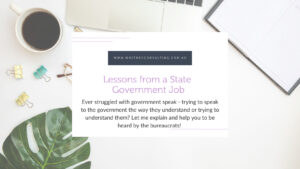Creating a winning tender bid requires a strategic approach and careful attention to detail. Understanding the client’s needs and tailoring your response to directly address those needs is key. Evidence-based responses are vital to showcase your capability and reliability.
Answer the tender questions precisely as they are asked. Avoid recycling old material or including unnecessary marketing fluff. Instead, be clear and direct in your responses, ensuring that every piece of information provided is relevant and supports your bid.
Bringing together the right team to handle different aspects of the bid can also make a significant difference. If you’re managing the bid by yourself, proper time management is crucial to cover all necessary tasks, from bid management to proofreading efficiently.
Understanding the Tendering Process
The tendering process involves several key steps that potential bidders must navigate. These steps are crucial for meeting all requirements and increasing the chances of winning the bid.
Decoding the Tender Documents
Tender documents contain all the essential information regarding the tender opportunity. These documents provide detailed requirements, including the specifications of the goods or services requested.
It is important to read these documents thoroughly to ensure compliance with all specifications. The invitation to tender will outline conditions, evaluation criteria, and the scope of the project. Bidders should pay special attention to these elements to tailor their bids accurately.
Also, bidders must place any supporting or additional information in appendices to keep the main bid document clean and easy to read. For a better understanding, breaking up the text with headings, tables, and charts can be highly effective.
Timeline of a Tender Opportunity
The timeline of a tender is strict. It begins when the tender opportunity is released. This is often marked by a specific date when the tender documents are made available to potential bidders.
The tender documents will state the deadline for submission. Typically, this period ranges from a few weeks to a couple of months. It’s critical for bidders to manage their time effectively to gather all necessary information and prepare their bids.
After submission, there may be additional stages, including evaluations, negotiations, and possibly presentations. Being aware of these stages can help in preparing a well-organised and timely bid.
Developing a Persuasive Response Strategy
Creating a winning tender bid requires understanding the buyer’s needs and offering a clear value proposition. Each part plays a key role in ensuring that your response stands out from the competition.
Analysing the Buyer’s Requirements
Begin by thoroughly analysing the buyer’s requirements. Read the tender document carefully and identify the key criteria and expectations. Look for specific details that indicate the buyer’s priorities, such as budget constraints, timelines, or quality standards.
Create a checklist of these requirements and ensure that your response directly addresses each one. Highlight how your experience and capabilities meet these needs. Use the same language and terminology used by the buyer to demonstrate alignment and understanding.
Creating a Value Proposition
A strong value proposition is essential in tender writing. It should clearly outline the benefits and advantages your solution offers over competitors. Focus on the unique qualities of your proposal that add value to the buyer.
Identify specific problems the buyer is facing and explain how your products or services provide solutions. Use metrics, case studies, or testimonials to support your claims. Be concise but compelling, making sure your value proposition clearly shows why your bid is the best choice.
Showcasing Your Organisation’s Capabilities
To highlight your organisation’s strengths, it’s essential to provide concrete evidence of your abilities and supportive testimonials. Using case studies and demonstrating a strong track record also plays a key role in building confidence in your competencies.
Providing Concrete Evidence and Testimonials
Concrete evidence is crucial for establishing credibility. This can include metrics, certifications, and awards that highlight your capabilities. Testimonials from previous clients serve as strong endorsements of your skills and reliability.
Real-world examples should be included to show that your organisation has successfully completed similar projects. This could be statistics showcasing performance improvements or documented financial savings for clients. Testimonial quotes should be specific, mentioning the project, the outcome, and how it added value.
Utilising Case Studies and Track Record
Case studies are detailed narratives of successful projects previously handled by your organisation. They should cover the problem, the solution provided, and the positive outcome for the client. Focus on what sets your organisation apart in solving unique challenges and delivering results.
Your track record encompasses your historical performance in similar jobs. List key projects, their scope, and the skills used to complete them. Highlight any repeated contracts or long-term partnerships, emphasising continuous, reliable performance. This helps showcase that you have the capability and experience to handle the job at hand.
The Art of Writing a Convincing Tender Proposal
A convincing tender proposal relies on attention to detail, a clear and logical structure, and persuasive presentation. These key elements work together to make a strong case.
Emphasising Detail and Specificity
Detail and specificity are crucial in a tender proposal. Carefully read the tender documents to understand the specifications and requirements. Each section of the proposal must address these points directly.
Using clear examples and evidence to demonstrate qualifications helps make the proposal more compelling. Show how past work aligns with the tender’s needs by referencing specific projects.
Being thorough includes double-checking all numbers, timelines, and assumptions. Attention to small details can set a proposal apart from others. Proofreading the final document ensures there are no mistakes.
The Importance of Clarity and Structure
A well-structured tender proposal is easy to read and follow. Begin with a strong introduction that outlines the main points. Use headings and subheadings to break down information into manageable sections.
Organise the content logically. Start with an overview, followed by detail-oriented sections. Each section should build upon the previous one, creating a cohesive argument.
Use bullet points and tables to present data clearly. Ensure the language is simple and direct; avoid jargon that might confuse the reader. Logical flow and clear language help convey confidence and competence.
Incorporating Persuasive Elements
Persuasive elements are key to a winning tender proposal. Highlight the unique value your business offers. Compare this with the tender’s requirements to show a strong fit.
Use testimonials and case studies to provide evidence of past success. This helps build trust and demonstrate credibility. Make sure these examples are relevant and specific to the tender’s needs.
Clearly outline the benefits of choosing your proposal. Focus on how you will meet or exceed the tender requirements. Persuasive writing isn’t just about claiming you can do the job; it’s about showing your capability through concrete examples and logical reasoning.
Essential Supporting Documents and Compliance
When preparing a tender bid, it’s crucial to ensure that all required documents are properly compiled and that the submission adheres to the specified guidelines. Following a structured approach can improve your chances of success.
Meeting the Bid Submission Guidelines
Adhering strictly to bid submission guidelines is essential. Pay close attention to the format, font, and spacing; replicating these increases the chances of acceptance. It’s crucial to:
- Carefully review the tender documents.
- Ensure compliance with every requirement.
- Highlight important details.
Follow the sequence and structure as outlined in the tender document. Copy and paste headings if necessary to maintain consistency. Ensure all sections are filled out completely. Proofread meticulously to avoid any errors that could disqualify the bid. Missing even a small detail can lead to rejection.
Preparing Supporting Documentation and Policies
Comprehensive supporting documentation and clear policies are vital. Have all evidence to support your capability and value proposition at hand. Essential documents often include:
- Company Policies: Health and safety, environmental, and quality policies.
- Financial Statements: Recent audited accounts.
- Insurance Certificates: Proof of required insurances.
- Past Performance: Examples of relevant past projects.
Create a detailed checklist to track all required documents. This helps in ensuring nothing is overlooked. Keeping digital and physical copies organised is beneficial. When compiling, categorise documents logically and clearly label each section for easy navigation. Regularly update policies and procedures to reflect current standards and practices.
Frequently Asked Questions
Preparing a winning tender bid involves a detailed process, including understanding the key components, effective strategies, common pitfalls, and crafting a compelling executive summary. Additionally, reviewing previous successes and maintaining best practices in document presentation can significantly enhance your proposal.
What are the key components of a successful tender response?
A successful tender response should be well-organised and tailored to the specific requirements of the tender. It must include a comprehensive project plan, clear pricing, and credentials demonstrating capability and experience. Supporting documents and appendices can provide additional relevant information.
What strategies are most effective in distinguishing your bid from competitors?
To stand out, highlight unique selling points and offer innovative solutions. Ensure your response is accurate and aspirational. Demonstrating value for money and understanding the client’s needs can make a significant difference.
What are the common pitfalls to avoid when writing a tender bid?
Common pitfalls include submitting late, failing to address all tender requirements, lack of detail and providing inaccurate information. Avoid complex jargon, and ensure that the response is free from errors and inconsistencies. Being too generic and not customising the proposal based on the tender specifics can also be detrimental.
In what ways can previous successful tender bids be utilised to enhance future proposals?
Reviewing past successful bids enables identification of what worked well and areas that need improvement. Leveraging templates, strategies, and formats proven successful can save time and enhance the quality of future bids.
What are the best practices for tender bid presentations and document formatting?
Best practices include using a clean, professional layout with appropriate headings, bullet points, and tables. Ensure consistency in formatting and style, and include visuals where relevant. Attention to detail in presentation can significantly impact the overall impression of your bid.
Seal the Deal: Your Path to Tender Success Starts Here!
Preparing a winning tender bid requires more than just filling out forms; it demands a strategic approach, attention to detail, and a deep understanding of what the client is looking for. If you’re aiming to increase your chances of success, partnering with an experienced consultancy can make all the difference. Whitney Consulting specialises in helping businesses craft compelling tender bids that stand out from the competition. With a team that understands the intricacies of the tendering process, we ensure your bid not only meets the requirements but also showcases your strengths in the best possible light. Let Whitney Consulting guide you through every step of the tender preparation, so you can confidently submit a bid that has a higher likelihood of winning. Don’t leave your tender to chance—trust the experts at Whitney Consulting to help you secure your next big contract.






